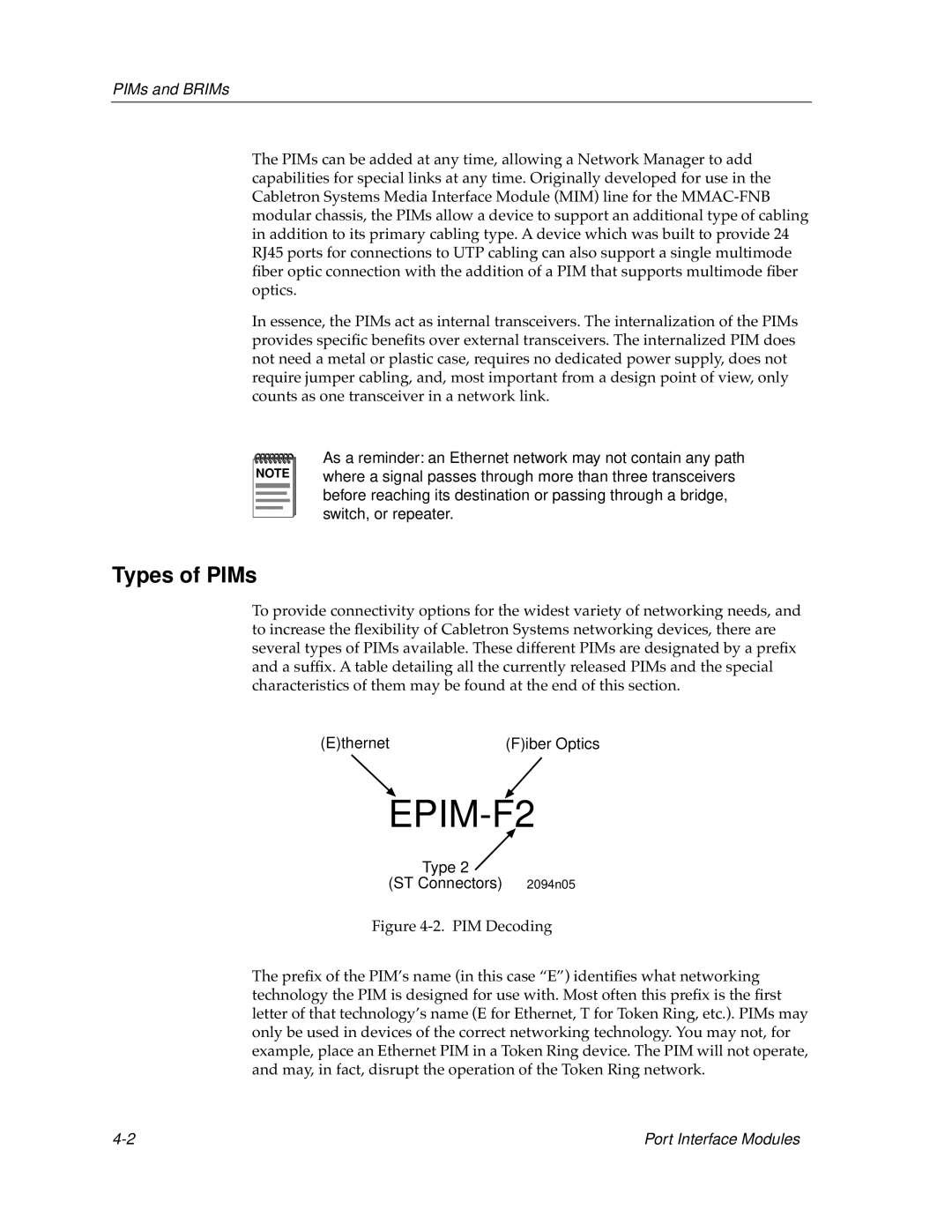
PIMs and BRIMs
The PIMs can be added at any time, allowing a Network Manager to add capabilities for special links at any time. Originally developed for use in the Cabletron Systems Media Interface Module (MIM) line for the
In essence, the PIMs act as internal transceivers. The internalization of the PIMs provides specific benefits over external transceivers. The internalized PIM does not need a metal or plastic case, requires no dedicated power supply, does not require jumper cabling, and, most important from a design point of view, only counts as one transceiver in a network link.
NOTE |
As a reminder: an Ethernet network may not contain any path where a signal passes through more than three transceivers before reaching its destination or passing through a bridge, switch, or repeater.
Types of PIMs
To provide connectivity options for the widest variety of networking needs, and to increase the flexibility of Cabletron Systems networking devices, there are several types of PIMs available. These different PIMs are designated by a prefix and a suffix. A table detailing all the currently released PIMs and the special characteristics of them may be found at the end of this section.
(E)thernet(F)iber Optics
EPIM-F2
Type 2 ![]()
(ST Connectors) 2094n05
Figure 4-2. PIM Decoding
The prefix of the PIM’s name (in this case “E”) identifies what networking technology the PIM is designed for use with. Most often this prefix is the first letter of that technology’s name (E for Ethernet, T for Token Ring, etc.). PIMs may only be used in devices of the correct networking technology. You may not, for example, place an Ethernet PIM in a Token Ring device. The PIM will not operate, and may, in fact, disrupt the operation of the Token Ring network.
Port Interface Modules |
